Connected Communities
Our communities will include housing, transportation and public spaces that foster well-being and social connection as we age.

Our homes and neighborhoods are always important, and they become even more so as we age. Let’s make our communities work for every stage of life.
Does where we live—both our dwelling and our immediate community—allow us to live comfortably, safely, and affordably, and to remain connected to the people and things we care about? Our homes, our ability to get around, and to stay connected to people and information all intersect and depend on each other.
To achieve this goal, our strategies are:
- Affordable Housing for the Lifespan
- Multimodal Transportation Options
- Public Spaces for All Ages and Seasons
- Digital Engagement

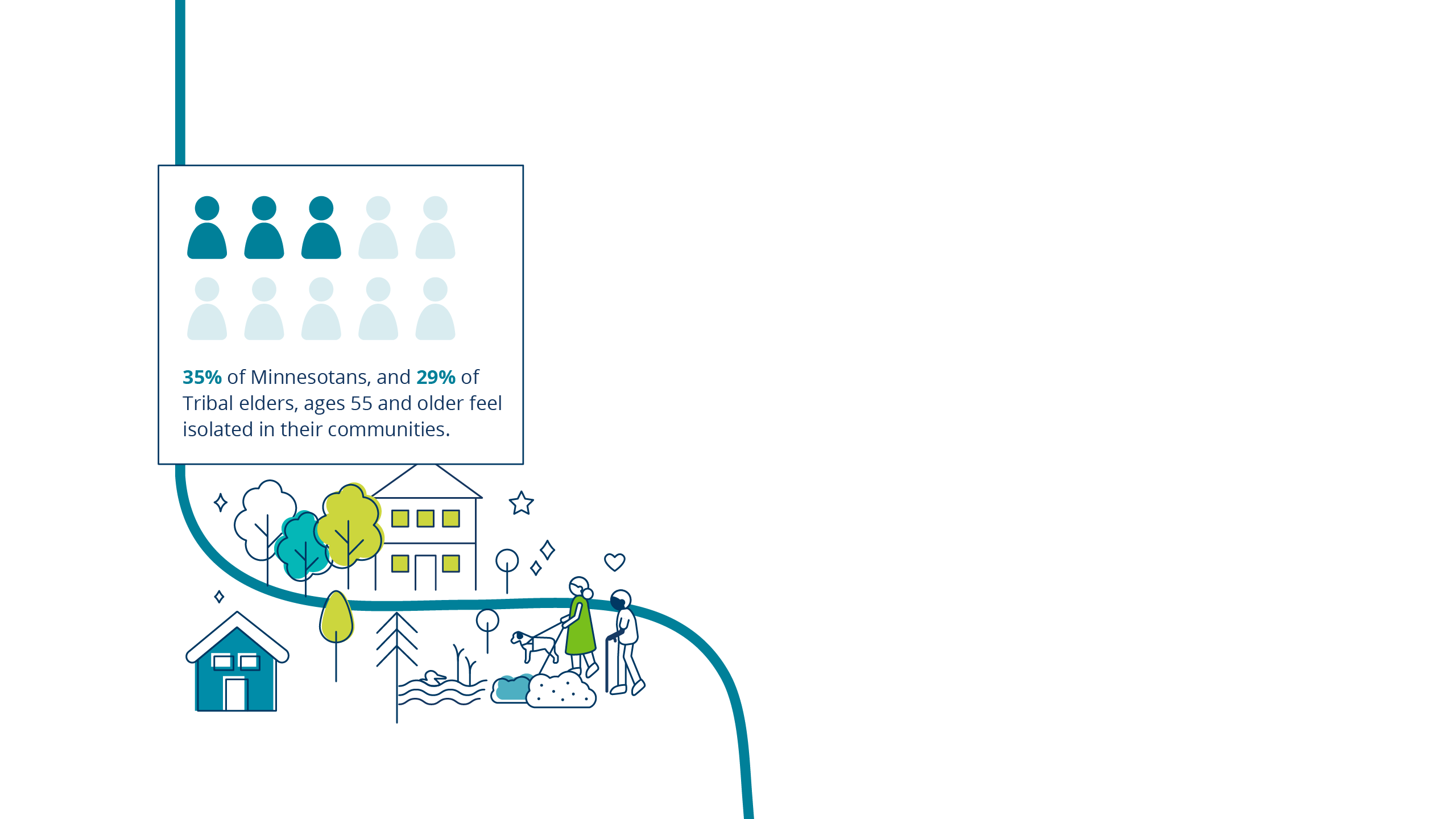
How do we create age-friendly communities?
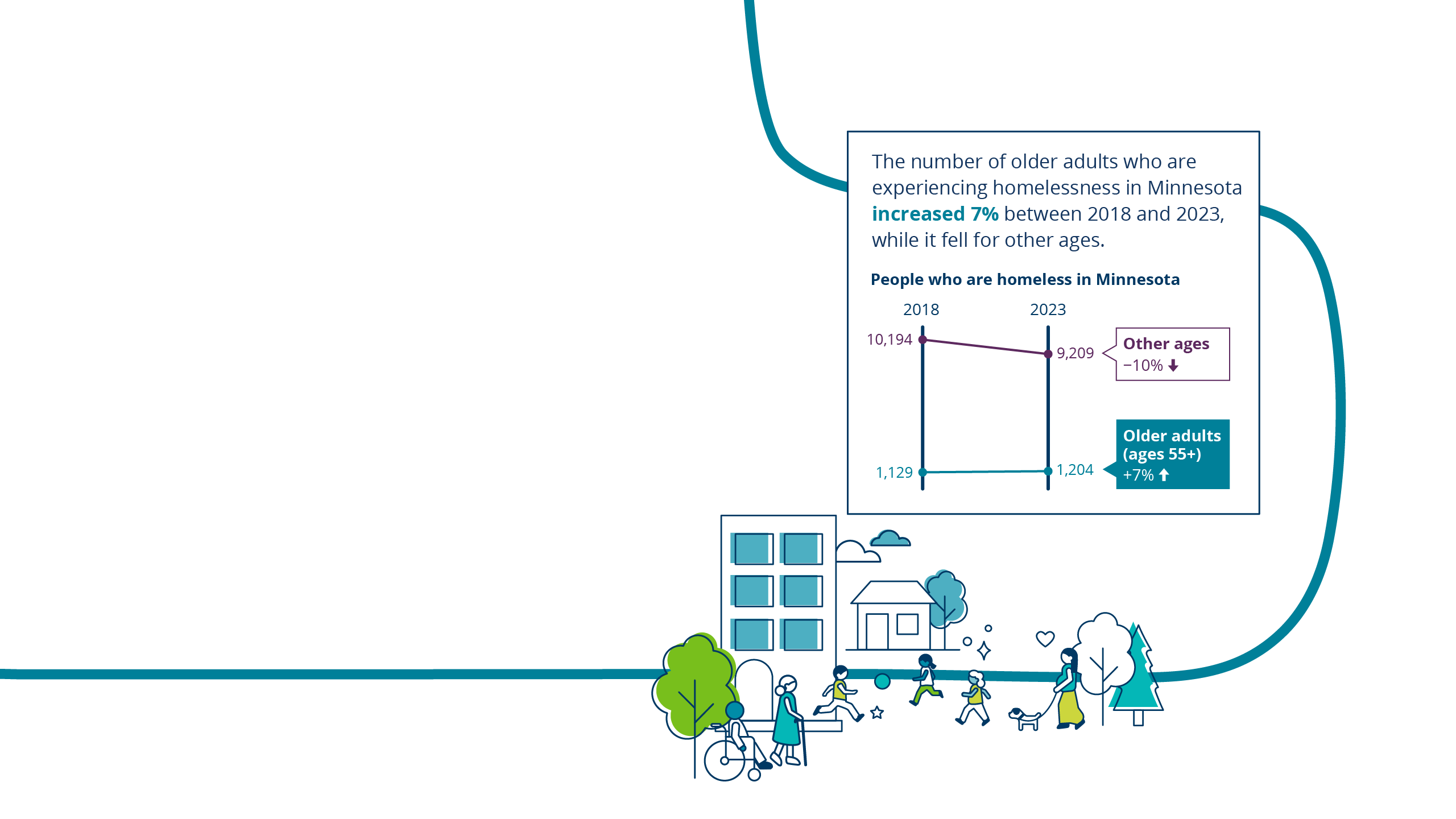
Affordable Housing for the Lifespan
We need more and better housing choices for later life.
Many factors shape where we live and the choices we have—especially our income, but also our culture, health, geographic location, and support network, among other things. This can change over time and in different chapters of life.
Affordability is increasingly urgent as housing costs rise. Older adults are the fastest growing segment of Minnesota’s homeless population.1 And while Minnesota has a high homeownership rate, it also has the fourth largest homeownership disparity between White households and that of Black, Indigenous and households of color.2
Age-friendly housing decisions must also consider home design and accessibility, zoning and land use, in-home services, and exploration of new models.
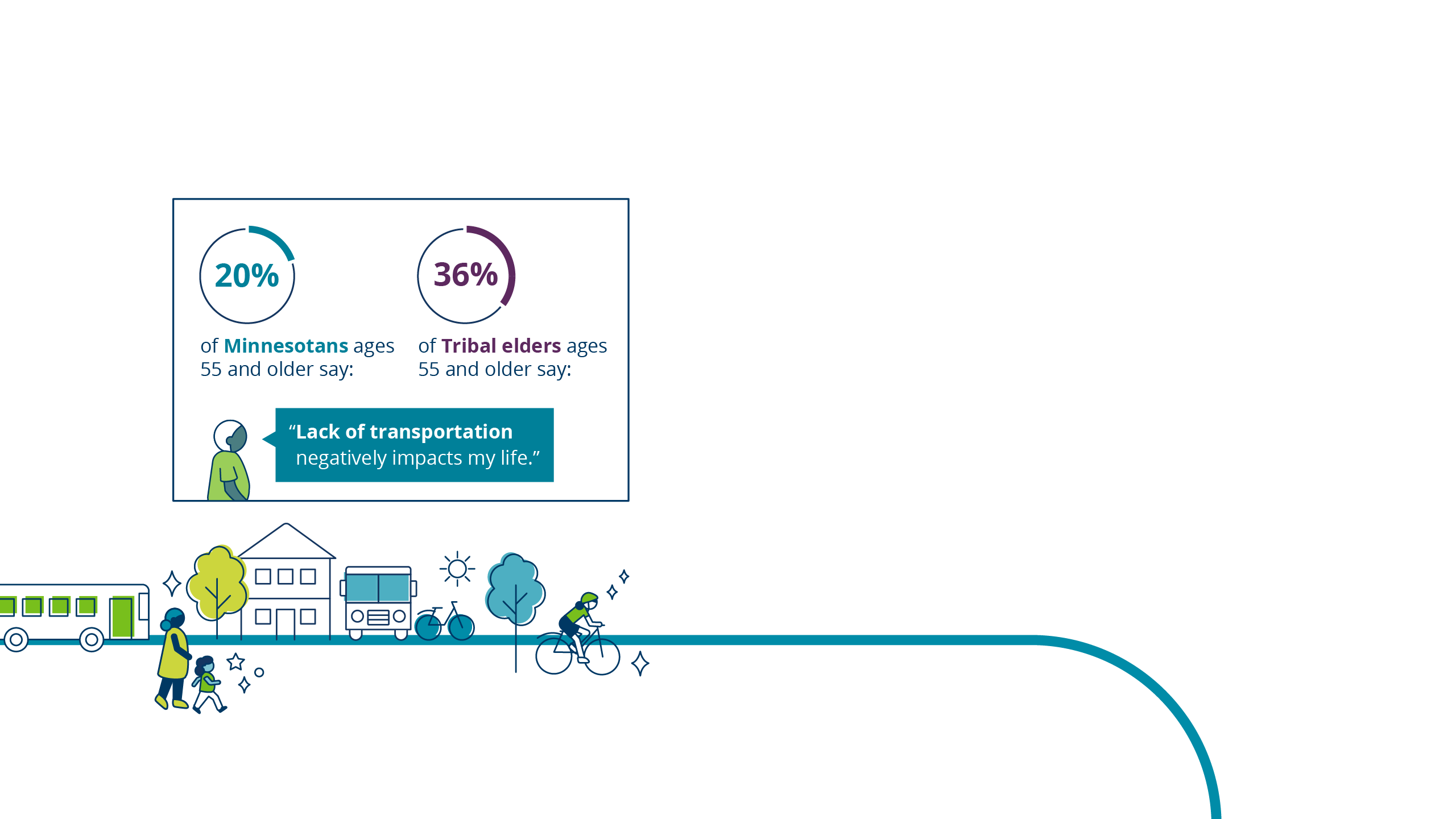
Multimodal Transportation Options
As we think about an older society, transportation is fundamental to connected, autonomous living.
We all need convenient, affordable, appropriate transportation for everything from routine errands to medical appointments, to social gatherings and community events—to simply be who we are and do the things that matter to us.
Multi-modal transportation comes down to choices that work for different people and circumstances. To walk and bike, we need networks of well-maintained sidewalks and paths and safe intersections. People with certain disabilities need specialized transportation, including door-to-door service.
Transportation remains an especially big challenge for aging in place in Minnesota's rural communities, home to a greater proportion of the state’s older adults.3 Solutions might look different from place to place, depending on what makes sense for a given community, but we all need choices.
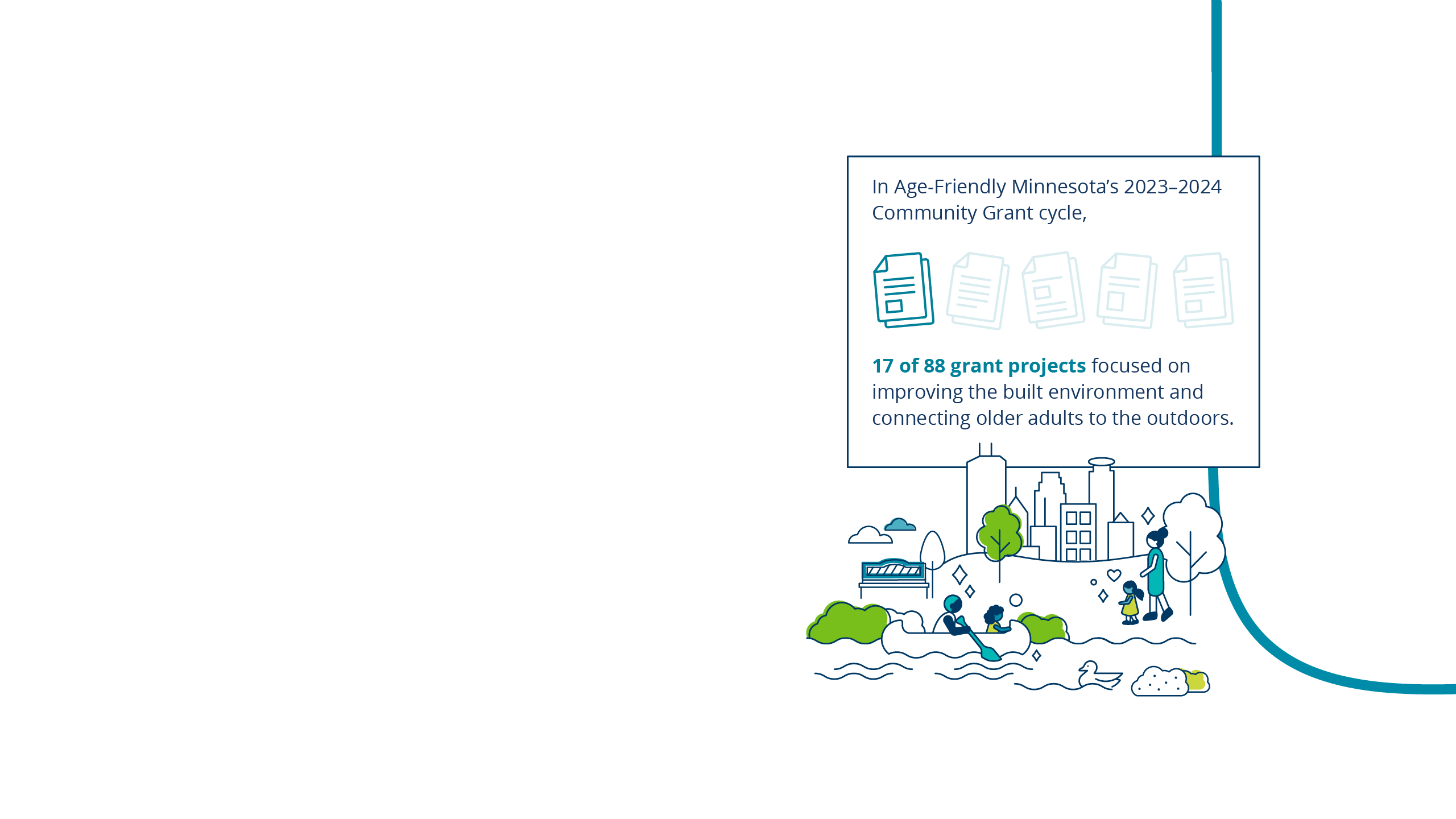
Public Spaces for All Ages and Seasons
Do our communities empower us, or disable us? The public spaces and buildings we need can be designed to do either.
Places should be designed for health and well-being. The buildings, parks, and other public spaces around us have been designed by people and shaped by policies. We have the power to make sure these spaces actively and deliberately include everyone.
Easy access to safe, welcoming parks contributes to quality of life and encourages physical activity and social gathering. Well-designed buildings mean accessibility isn’t a barrier to participating in community life.
As new buildings and public spaces are constructed, and others are updated over time, they should be designed to be welcoming, accessible places for all users.
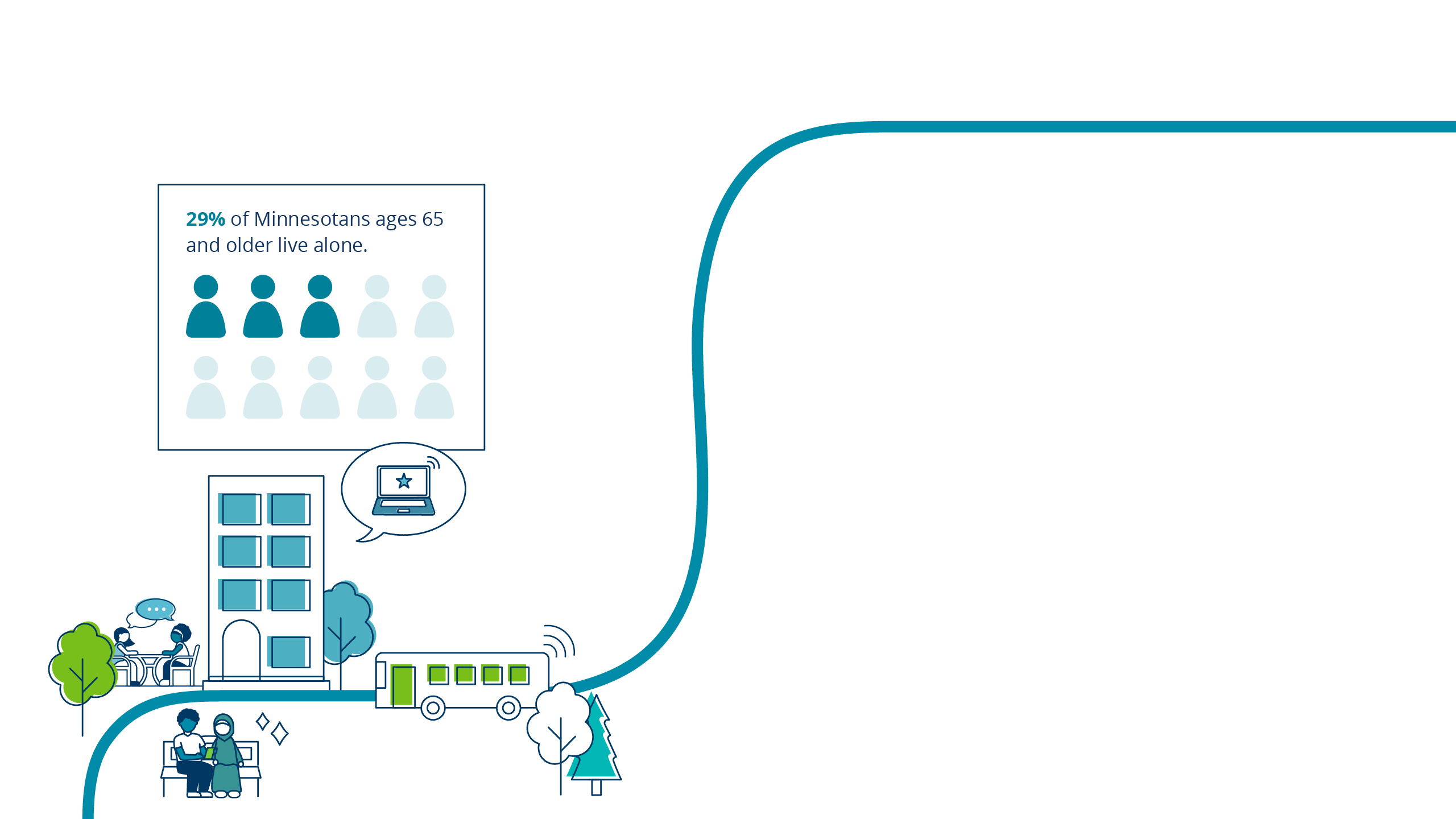
Digital Engagement
Human beings are wired to connect with other people. That doesn’t change with age.
For various reasons, we commonly find ourselves with fewer social connections in later life—sometimes due to retirement, loss of family or friends, or managing a chronic health condition.
Social isolation and loneliness have very real consequences—for people’s lives and for the system. They take a measurable toll on physical and mental health4 and make us more vulnerable to abuse and maltreatment. Further, a lack of social contacts among older adults is associated with an additional $6.7 billion in Medicare spending annually.5
We need our communities and our communities need us—as workers, caregivers, volunteers, consumers, and contributors to the fabric of society. As more of us hit older age, it becomes increasingly important to bolster our social and community connections.
Featured Statistic Sources
MN Age-Friendly Statewide Needs Assessment, 2021.
Wilder Research, 2023 Minnesota Homeless Study.
MN DHS, Jan 2024.
Footnotes
1 Wilder Research, 2023 Minnesota Homeless Study.
2 MN Housing, Disparities Report, 2022.
3 University of Minnesota Rural Health Research Center Policy Brief, 2021.
4 NASEM, 2020.
5 AARP Public Policy Institute, 2017.
About Age-Friendly Minnesota
Age-Friendly Minnesota is a collaborative statewide effort to make our systems and communities more inclusive of and responsive to older adults.






